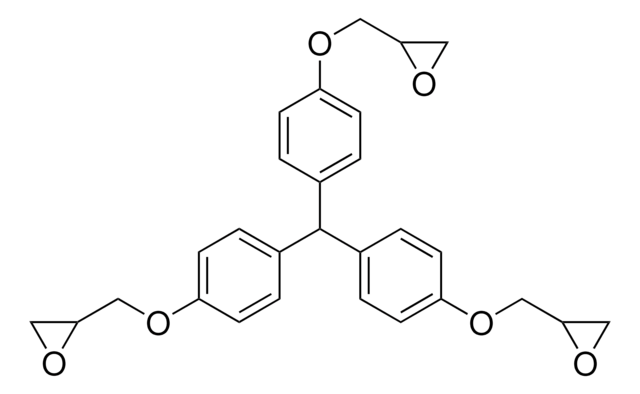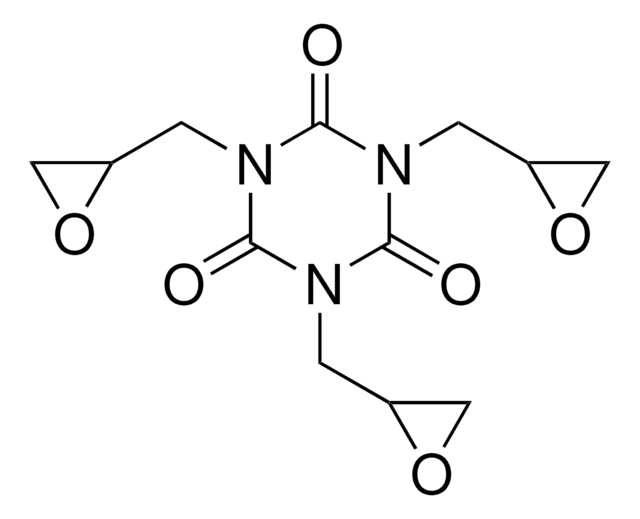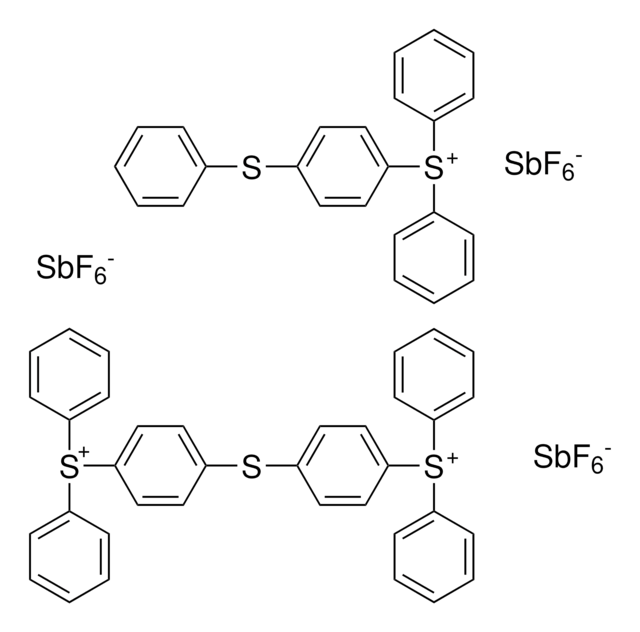412805
4,4′-Methylen-bis(N,N-diglycidylanilin)
Synonym(e):
4,4′-Methylenebis[N ,N -bis(oxiranylmethyl)aniline], 4,4′-Methylenedianiline tetraglycidyl ether, N ,N ,N ′,N ′-Tetraglycidyl-4,4′-methylenebisbenzenamine, N ,N ,N ′,N ′-Tetraglycidyl-4,4′-methylenedianiline, Bis[4-(diglycidylamino)phenyl]methane
About This Item
Empfohlene Produkte
Form
viscous liquid
Brechungsindex
n20/D 1.601 (lit.)
Dichte
1.15 g/mL at 25 °C (lit.)
SMILES String
C1OC1CN(CC2CO2)c3ccc(Cc4ccc(cc4)N(CC5CO5)CC6CO6)cc3
InChI
1S/C25H30N2O4/c1-5-20(26(10-22-14-28-22)11-23-15-29-23)6-2-18(1)9-19-3-7-21(8-4-19)27(12-24-16-30-24)13-25-17-31-25/h1-8,22-25H,9-17H2
InChIKey
FAUAZXVRLVIARB-UHFFFAOYSA-N
Verwandte Kategorien
Allgemeine Beschreibung
Anwendung
- As a starting material to synthesize UV-curable tetra-functional epoxy acrylate (EA4), which is used as a crosslinker for UV-curable resins.
- In the synthesis of bismaleimide/diallyl bisphenol A (BMI/DBA)–epoxy interpenetrating network resins, which have potential applications in the aerospace and automotive industries because of their high thermal stability and low activation energy.
- As a crosslinking agent in the production of biocompatible materials, such as hydrogels and other tissue engineering scaffolds. Its ability to form strong and stable crosslinks makes it valuable in the creation of medical devices, implants, and drug delivery systems. Additionally, it is utilized in the synthesis of biocompatible polymers and materials with tailored properties for biomedical applications.
- Poly(hexamethylene biguanide) based polymer networks which are applicable as catalysts for the transesterification of vegetable oils.
- Tetra-functional epoxy-acrylate UV curable resins.
Signalwort
Warning
H-Sätze
Gefahreneinstufungen
Aquatic Chronic 2 - Muta. 2 - Skin Sens. 1
Lagerklassenschlüssel
10 - Combustible liquids
WGK
WGK 2
Persönliche Schutzausrüstung
Eyeshields, Faceshields, Gloves, type ABEK (EN14387) respirator filter
Hier finden Sie alle aktuellen Versionen:
Besitzen Sie dieses Produkt bereits?
In der Dokumentenbibliothek finden Sie die Dokumentation zu den Produkten, die Sie kürzlich erworben haben.
Kunden haben sich ebenfalls angesehen
Unser Team von Wissenschaftlern verfügt über Erfahrung in allen Forschungsbereichen einschließlich Life Science, Materialwissenschaften, chemischer Synthese, Chromatographie, Analytik und vielen mehr..
Setzen Sie sich mit dem technischen Dienst in Verbindung.













